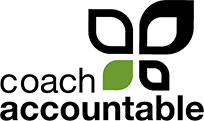Of Corporate Trainers and Ugly Excel Spreadsheets
Over the weekend I met a fellow who gave me a glimpse into a world of coaching that is otherwise quite uncharted by me: internal corporate training. Now then, the internal workings of a corporate training program may as well be assumed sensitive information, so out of respect for that assumption I’ve altered particulars and paraphrased quotations a bit while still retaining the proper gist. “Chris” is a senior sales agent, and is responsible for giving training, guidance and evaluation to a rotating cadre of other sales agents in his firm on ongoing basis. When he asked what I do and I told him of CoachAccountable, it turned out we had a lot to talk about.
“Yeah, I’m coaching a bunch of other sales people at any given time.” He gave me a rundown of how that coaching is managed, the center of which is a master template Excel spreadsheet that gets filled out whenever he coaches a fellow employee. I hadn’t seen a ugly spreadsheet masquerading as software since the beloved small e-commerce company I used to work for got acquired by Network Solutions, but sure enough this was such a thing. It was mainly comprised of few boxes into which hard-to-read notes are typed, a few pull down menus hinting that 5 is swell and 1 is strongly not swell, and a button to “lock this document” that doesn’t work but provides at least the illusion that the content is tamper proof once mutually signed off on.
I asked what happened to these forms once filled out. “I’ll send this to the person I coached, send a copy to their manager, and file it in the training records per the usual protocol.” Does anyone ever reads these, or, say, look back more than 2 or 3 sessions to see an agent’s progression over time? “No, I don’t think anyone ever looks back one session.” How about action plans and areas of focus that get hammered out in these sessions, is there any sort of follow up or check in on that? “No, once the form is filled out and sent off, that’s pretty much it.”
I gave Chris a look around CoachAccountable, showing off how things work and explaining the difference they make in coaching, and curious about how useful it might be to a man in his position. Chris is wicked smart, an expert in his domain and completely qualified to offer the kind of coaching and support that his sales colleagues need. So it intrigued me when he said that the guy who designed his company’s coaching program had left the company months ago, and that it wasn’t clear how to design one that could replace what was already established.
Buried in this notion is a brilliant insight: people who have grade-A domain knowledge and expertise, plus a willingness and ability to impart that expertise to others, are 90% of the way to being effective coaches who are able to design programs for their coachees. It just doesn’t seem that way only because a fancy notion like “design a coaching program” seems like a huge barrier, one requiring a whole other level of training and formality.
But a “coaching program” can be really simple in structure, something like, say:
“We talk once a week. We make actions, we define metrics. During the week you do those actions, you track those metrics. Then we talk about how it went. Lather, rinse, repeat.”
The “program” doesn’t have to be complicated to be effective, because the real magic is in the actual coaching: the actual expertise being communicated, the actual insights being discovered, the actual support being given. When tied to a system like CoachAccountable, a simple program is made real, tangible, and easy to manage.
I setup Chris with an account of his own. I then bumped his free trial up to 90 days, which I figure is a worthy sacrifice in this instance to give CoachAccountable’s first foray into corporate culture (that I know of) a decent chance for adoption (things tend to move a little more, ahem, slowly in corporate settings).
Time will tell if CoachAccountable will positively affect the outcomes of the training work done at Chris’s firm, or even used in real practice at all. By a similar token, I have no idea how many other corporate training programs are run off of ugly excel spreadsheets. For now I am content to ponder how many such trainers and leaders with top-notch expertise could have their coaching made easier and more effective with just a little bit of software.
More recently: An Embarrassing Mistake
Previously: Should a Coach Take and Share Notes?
